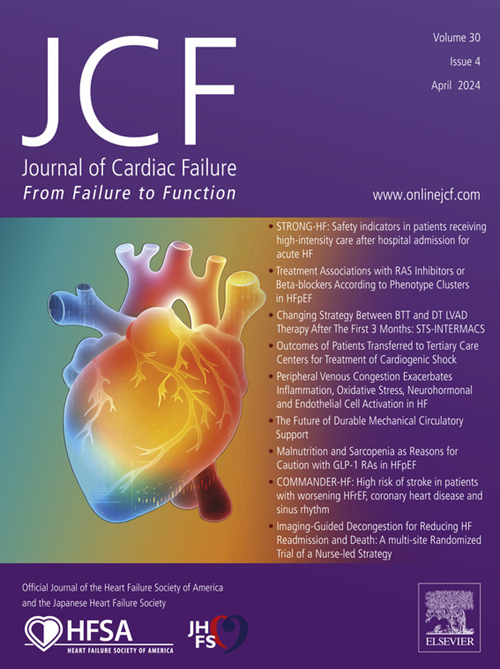Impact Of Diabetic Emergencies On Cardiovascular Outcomes Among Heart Failure Hospitalization: A Nationwide Retrospective Analysis
IF 6.7
2区 医学
Q1 CARDIAC & CARDIOVASCULAR SYSTEMS
引用次数: 0
Abstract
Background
Approximately 40% of patients with heart failure (HF) have coexisting diabetes mellitus. We examined the cardiovascular outcomes among hospitalization for heart failure with and without diabetic emergencies.
Methods
We stratified patients admitted for HF into diabetic emergencies versus without diabetic emergencies and examined the cardiovascular outcomes between the two cohorts using NIS database (2016-2020) and ICD-10-CM codes. The impact of diabetic emergencies such as diabetic ketoacidosis, hyperosmolar hyperglycemic states and diabetic hyperglycemia were assessed. The outcomes were examined using multivariable logistic regression. Propensity scores were employed to balance the differences between the groups using inverse probability treatment weighting. Illness severity, risk of mortality, and comorbidity were adjusted using All-Patient-Refined Diagnosis-related-groups metrics and the Charlson comorbidity index
Results
A total of 2 782 004 patients were admitted for HF, 14 129 of them experienced diabetic emergencies. The cohort was mostly female (51%, p,0.001), for both cohorts. Patients admitted for HF with diabetic emergencies, had higher associated comorbidities like pulmonary disease, hypothyroidism, anemia, hypertension, except for obesity, renal failure (p <0.01). Compared to patients admitted for HF with diabetic emergencies, patients without diabetic emergencies had higher in hospital mortality (5.4% versus 0.7%, p <0.001), cardiogenic shock (1.2% versus 0%, p <0.001), acute stroke (1.4% versus 0.4%, p <0.001), acute MI (5.1 versus 2.1, p <0.001), sudden cardiac arrest (2.3% versus 0.8%, p <0.001), although patients with diabetic emergencies had more AKI and venous thromboembolism [41.2% versus 25.6%, p <0.001 and 0.2% versus 0.1%, p=0.06) respectively.
Conclusion
Patients admitted for HF without diabetic emergencies had high mortality rates and in hospital cardiovascular events despite having less associated comorbidities. This could in part be due to frequent hospitalization or frequent clinic visits by patients who have more comorbidities as well as diabetic emergencies during hospitalization. Close monitoring should also be given to patients with less comorbidities or less severity of illness during and post hospitalization to ensure their improvement of the aforementioned outcomes.
求助全文
约1分钟内获得全文
求助全文
来源期刊

Journal of Cardiac Failure
医学-心血管系统
CiteScore
7.80
自引率
8.30%
发文量
653
审稿时长
21 days
期刊介绍:
Journal of Cardiac Failure publishes original, peer-reviewed communications of scientific excellence and review articles on clinical research, basic human studies, animal studies, and bench research with potential clinical applications to heart failure - pathogenesis, etiology, epidemiology, pathophysiological mechanisms, assessment, prevention, and treatment.
 求助内容:
求助内容: 应助结果提醒方式:
应助结果提醒方式:


